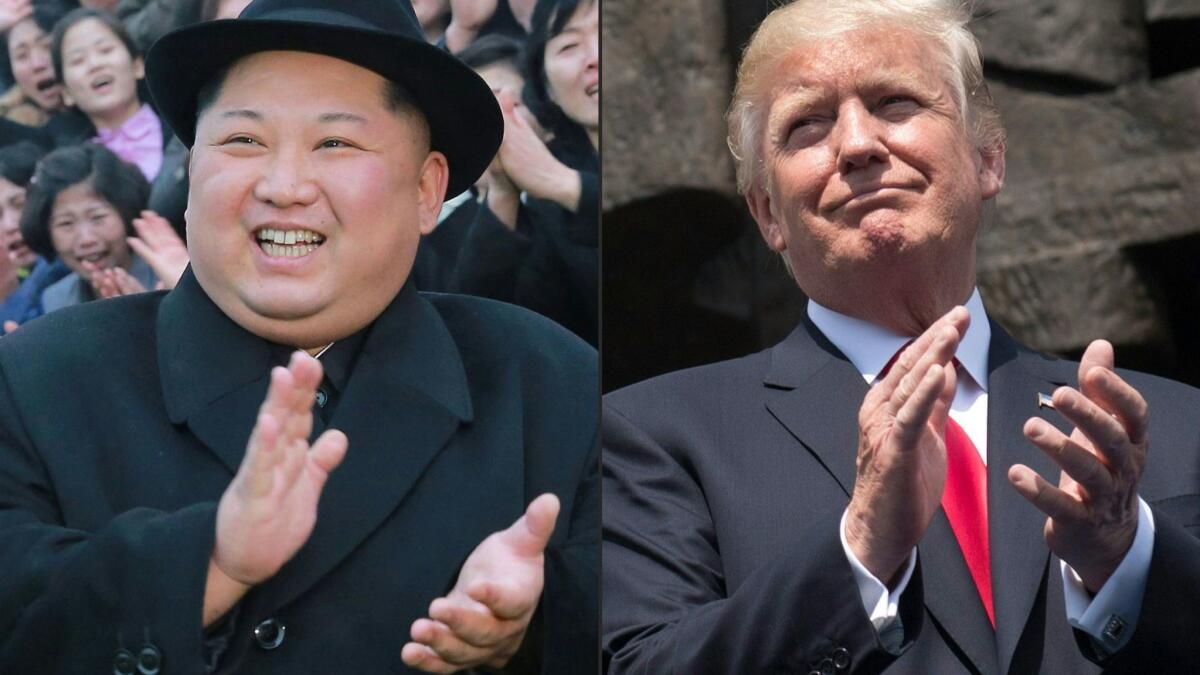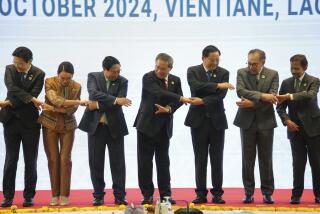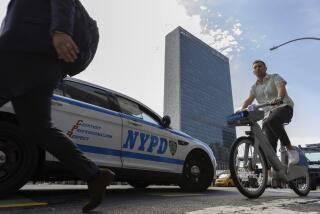Must Reads: And the winner is ... : How a Southeast Asian city-state came to host the Kim-Trump summit

Reporting from Beijing — Mongolia flagged its neutrality. Sweden offered its expertise. South Korea knew a spot. In the end, President Trump and North Korean leader Kim Jong Un settled on the tiny, orderly island of Singapore to hold a historic summit on June 12 that could peel open the world’s most reclusive and threatening country.
Yes, a city-state. In Southeast Asia. With palm trees.
This tropical locale of 5.5 million people has always been an anomaly, one of the globe’s most open economies and one of its strictest societies. Its leaders built a backwater into a shiny financial capital through meritocracy — and curbs on political freedoms. A former British colony, Singapore presents itself as the even-handed center.
The island has a North Korean embassy, and until 2016, that country’s citizens could enter without a visa. Singapore boasts a strong security relationship with the U.S.; Prime Minister Lee Hsien Loong was among the first Southeast Asian leaders to visit President Trump last fall. It has longstanding ties with China.
Singapore “doesn’t give Trump or Kim the dramatic photo op they would otherwise enjoy or home-court advantage,” said Duyeon Kim, visiting senior research fellow at the Korean Peninsula Future Forum, a nonpartisan think tank in Seoul. “But it’s a nominally neutral country … [this could] help in reducing some distractions and keeping the focus of the summit on substance, especially when the stakes are so high.”
Then there are the decidedly less sexy, practical aspects, like how far Kim’s plane can travel.
When Kim jetted to the northeastern Chinese city of Dalian this week, he became the first North Korean leader to fly abroad in three decades. Some analysts doubt the country owns planes with the capacity to go much farther. Kim might make the 3,000-mile journey to Singapore, but it’s unlikely he’d get to Switzerland.
“Singapore is a destination that Kim’s airplane is believed to be able to reach without refueling,” said Yanmei Xie, a policy analyst for Beijing-based Gavekal Dragonomics who tracks developments on the Korean Peninsula. And it “has the infrastructure to accommodate the security and publicity needs of the U.S. president.”
Singaporean officials are adept at piecing together high-stakes, high-level meetings at the last minute, including the 2015 summit between Chinese President Xi Jinping and Taiwan’s president at the time, Ma Ying-jeou. This eerily efficient city — try finding a piece of litter — can ensure security in ways many bigger, less obedient places can’t. (Chewing gum was once famously outlawed and caning is permitted as punishment for minor crimes.)
“Singapore has a really long track record of being able to hold these sorts of things with nothing going wrong,” said Malcolm Cook, senior fellow at the ISEAS-Yusof Ishak Institute in Singapore. “No other country in Southeast Asia fits that bill.”
It also will host an annual defense conference in early June, which draws some of the same U.S. and North Korean officials expected to attend the leaders’ meeting. That makes it oddly convenient.
The other contender, the “truce village” of Panmunjom, was the flavor of last month. Kim met South Korean President Moon Jae-in at the demilitarized zone only two weeks ago. A repeat visit could make Trump look like the encore and emphasize Moon’s role in peace talks over Kim’s.
“Obviously, North Korea has an interest in not being seen in South Korea’s shadow, and maybe for the U.S. too,” said Euan Graham, director of the international security program at the Lowy Institute in Sydney.
“The whole inter-Korean rapprochement has kicked this off and it would be a bit uncomfortable for the U.S. to have to deal with the difficult issue of when you bring Moon into the room.”
China likely would have preferred the summit to be held in Beijing, where officials could keep tabs on discussions. Singapore’s not a bad fallback. Chinese leaders revered its founder, Lee Kuan Yew, and have sought to keep close ties with the island, where Mandarin Chinese is one of four official languages. The relationship has strained in recent years over contested waters in the South China Sea, but tensions are starting to ease.
“Korea is ultimately a sideshow for Singapore,” Graham said. “What really matters is the U.S.-China relationship … anything that will buy credit for both main powers they’ll be trying to do.”
The summit could still unravel, enhancing the threat of a nuclear war. But Singapore has repeatedly called for direct talks between the U.S. and North Korea. Now it gets the chance to help make that possible — a reminder to the world of this small island’s outsized significance.
Sorry, Ulan Bator — Mongolia’s hidden capital. Maybe next time.
Meyers is a special correspondent.
Twitter: @jessicameyers
ALSO
3 American prisoners held in North Korea are freed and on their way home
Singapore is orderly, civil -- and aghast over a family feud
UPDATES:
9:40 a.m.: This article was updated with additional details on the selection of Singapore and other potential locations for the summit.
This article was originally published at 7:45 a.m.
More to Read
Sign up for Essential California
The most important California stories and recommendations in your inbox every morning.
You may occasionally receive promotional content from the Los Angeles Times.










